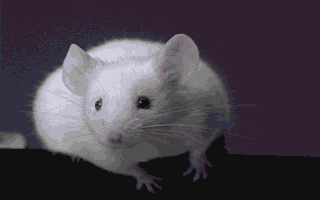CONSEQUENCES OF CHERNOBYL WORSE THAN
ASSUMED
VIENNA, 9 April 1996 (GP) Cancer rates are
up to 200 times higher than average in areas contaminated by
radiation from the explosion of the Chernobyl nuclear power station
in the Ukraine on April 26, 1986, according to a Greenpeace report
released today.(1)
The report is being released to coincide
with the International Atomic Energy Agency's (IAEA)
Conference
"Chernobyl one decade after".
At the last international meeting
organised by the IAEA in 1991 on the consequences of Chernobyl, they
concluded "future increases over the natural incidence of cancers or
hereditary effects would be difficult to discern, even with large and
well designed long term epidemiological studies"(2). This prediction
has proved to be total incorrect.
Most notably:-
* Thyroid cancers in the heavily
contaminated areas of Belarus, in Gomel, have increased to nearly 200
times above that expected, with the average increase in the country
above 100 times, according to OECD figures.(3)
"5 years ago, international institutions
were saying that no health effects from Chernobyl would be
detectable, however already we are seeing undisputed increases in
thyroid cancer", said Eloi Glorieux of Greenpeace International,
"What is now required is open-minded scientists to analyse the
prevalence of other diseases which are beginning to emerge".
In particular the Greenpeace report points
to:
* Increases in diseases, such as immune
deficiencies, diseases of the digestive organs, cardiovascular
systems and malignant tumours have all been noted in both some of
those involved in the clean-up (800,000 so called "liquidators") and
some of those living in contaminated areas.
* Several studies have showed a clear
relationship between radiation dose and particular morbidity's (e.g.
malignant tumours) among liquidators. These findings are based on
substantial epidemiological data and cannot be ignored.
In addition to underestimating the health
consequences serious errors have come to light in recent months
regarding the total radioactivity released. Since 1986 international
experts have claimed that the total radioactivity released was
around
50 million curies. However in February
this year the Nuclear Energy Agency(NEA), part of the Organisation
for Economic Co-operation and Development (OECD) reviewed the
discharge and established that 140 million curies was
released.
The figures for total land contaminated in
the three republics most affected (Belarus, Russian and Ukraine)
range from 100.000 to 160.000 square kilometres, with the cost to
those countries estimated to rise to a staggering $300 billion, by
2015.
To date an estimated 375 000 people have
been relocated with a further 270 000 requiring evacuation due to the
high radiation levels. In total at least 9 million people have been
affected by the accident.
"It is difficult to comprehend the
enormity of the Chernobyl accident" said Antony Froggatt of
Greenpeace International, "and ten years later the health,
environmental and social costs have not yet peaked and are unlikely
to do so for years if not decades".
Despite the massive media and public
attention, the resources available to the United Nations Trust for
Chernobyl have been exhausted and without further support from the
international community the UN's efforts will simply cease.
"The international community must provide
the needed resources to alleviate some of the suffering caused by
Chernobyl," said Froggatt, "but ultimately Chernobyl demonstrated why
nuclear power is an unacceptable risk to humanity."
[1] Chernobyl 10 Years After, the
Consequences. Published by Greenpeace International as "Chernobyl
Paper no.4", April 1996.
[2] The International Chernobyl Project,
Assessment of Radiological Consequences and Evaluation of Protective
Measures. Conclusion and Recommendations of a report by an
international advisory committee, 1991.
For Further Information contact:
Eloi Glorieux in Vienna: ++.43 1 713 00
3121 Antony Froggatt in Kiev: ++.38 0 44 244 38 47 Diederik Samson in
Vienna:++.31.6.531.06.595
 To the Front Page of
the Web Inquirer ->
To the Front Page of
the Web Inquirer ->
 <- Click to return to the Library Entrance.
To Contact Jani Roberts
<- Click to return to the Library Entrance.
To Contact Jani Roberts
